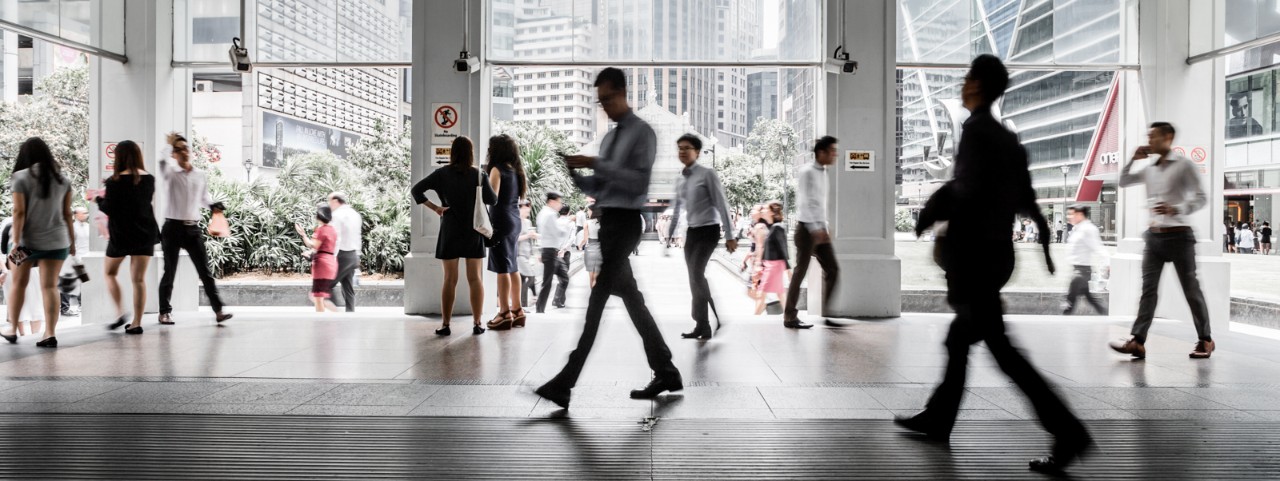Defining best practice in data management during a pandemic is like trying to nail jelly to the wall: It keeps moving as the crisis evolves. Singapore exemplifies this fact as well as any country.
The Lion City took early and bold action to confront COVID-19, beginning with temperature screening visitors from Wuhan, China, as early as January 3. Such efforts succeeded in containing the disease for two months. But infections have been on the rise since the middle of March, prompting the government in April to order schools and most stores and offices to close and nonessential workers to stay home. It has also launched a mobile app called TraceTogether to alert people who come in close contact with infected persons.
Fortunately for containment efforts, Singaporeans are more comfortable sharing several kinds of data to combat the virus than people in the US, UK, Germany, Spain, and Australia, according to an Oliver Wyman Forum survey. That’s especially true for biometric data, mobile location data, and airline travel information.
That willingness to share may reflect elevated risk perceptions. Singaporeans were more likely than other respondents in our survey to want to be notified if someone in their immediate neighborhood, workplace, or school came down with COVID-19. Many residents can recall the epidemic of severe acute respiratory syndrome, or SARS, that hit the city in 2003 and prompted the authorities to strengthen public health defenses. And Singapore has close business and cultural ties with China.
The country also has a history of effective government playing an active and transparent role in the economy and society. Data on housing sales and prices, for example, are readily accessible on the website of the Urban Development Authority. A law passed by parliament in 1976 gives officials broad authority to take action to combat infectious diseases and mandate interventions such as vaccinations.
The government has gradually ratcheted up the use of those powers. What began with airport screenings of visitors from Wuhan expanded in steps by February to include a bar on all Chinese visitors and a 14-day home quarantine requirement for Singaporeans returning from China. The authorities isolated infected persons and traced their contacts to prevent the spread of the disease. Those measures limited the number of active cases to just 30 in a population of 5.6 million people at the end of February.
But as the disease went global, Singapore hasn’t been spared. Infections began inching up in March and then climbed sharply. On April 7, the government triggered a so-called circuit breaker, temporarily shutting most business premises and closing schools. Within a week, mass transit and traffic volumes fell by more than 70 percent and nearly 80 percent of the labor force was working from home. Yet the total number of cases climbed above 10,000 on April 22, with the vast majority of new infections clustered in foreign worker dormitories. That prompted the government to tighten business restrictions further and bar daily movement of foreign workers in and out of dormitories.
The Ministry of Health publishes daily updates on the number of cases, whether they are imported or caused by community spread, and the growth of significant clusters. News organizations and apps are using that data to provide even more detail, including breakdowns of infected persons by age, gender and ethnicity, and maps showing prominent clusters – information that easily exceeds what’s available in the US and European countries.
Yet people in Singapore still care about their data. Their willingness to share a positive COVID-19 test result with national government officials and public health authorities was no greater than the average of other respondents in our survey. It’s also instructive to note that the country’s contact-tracing app, which was launched in March and has become a model for similar tools being developed in Australia, the US, and Germany, relies on voluntary participation. To date less than 20 percent of the population has downloaded the app, limiting its effectiveness.
In one notable respect, though, Singaporeans stand out. A majority of respondents said they would be comfortable sharing a positive test result with their employer or school, a much higher rate than the other countries.
That fact could be crucial when Singapore looks to emerge from the lockdown. There is discussion in the US and UK of the role employers may have to play to get the two economies moving again. With both governments lagging in their testing efforts, companies may need to step in with concrete measures to reassure their workers that it’s safe to go back to the office.
Many companies in Singapore were already doing this earlier in the crisis, for example by scanning employees’ temperatures as they entered the premises. They may have to step up their efforts in the weeks and months ahead to help Singapore beat the virus and revive the economy.

